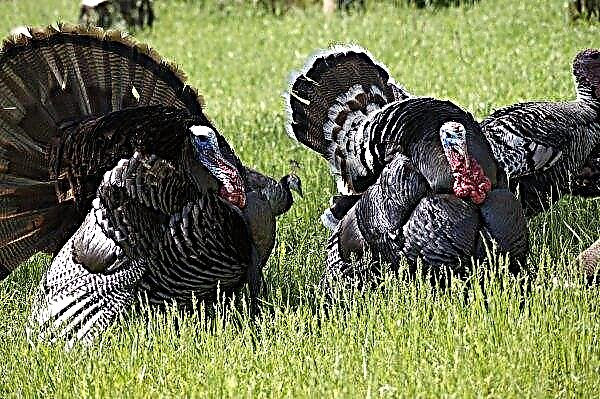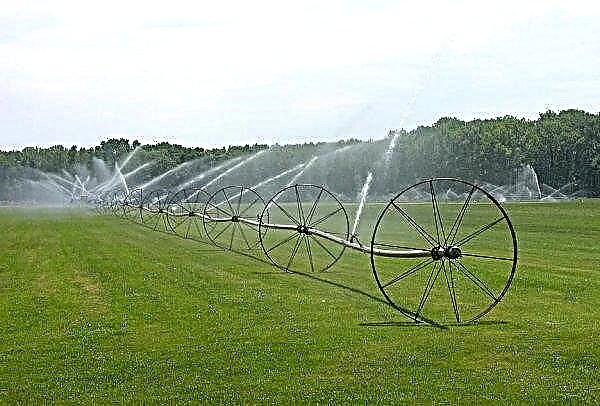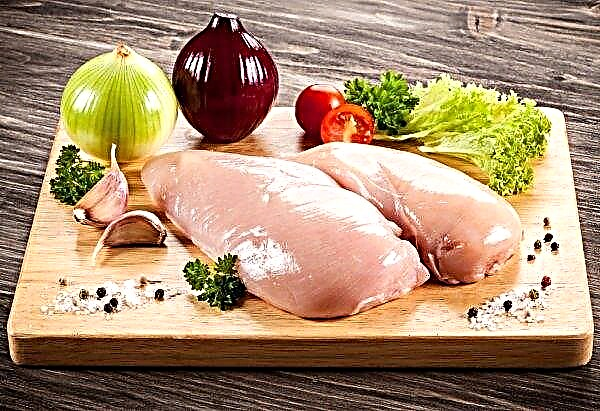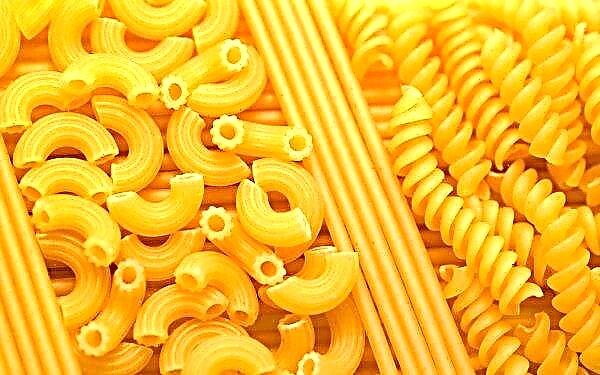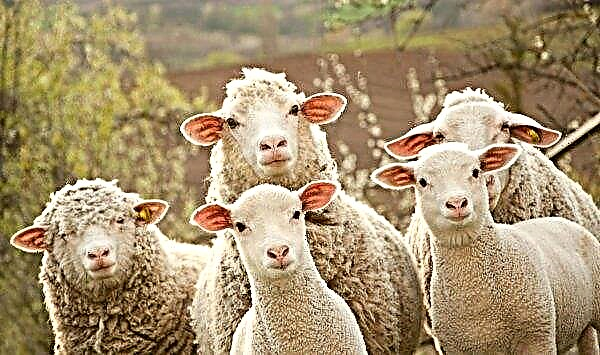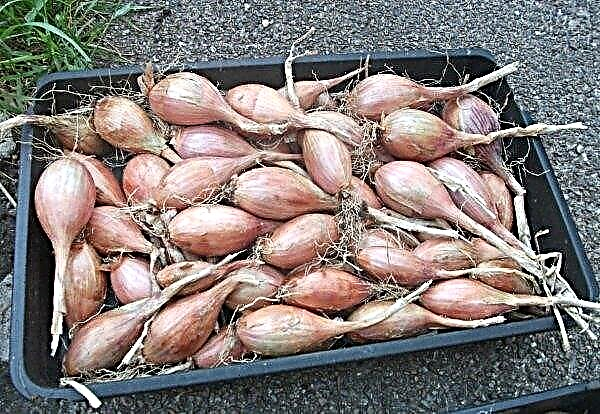Oats are among the important crops grown in the world. He doesn’t react to temperature changes like wheat, which allows farmers to effectively use the fields in the northern regions. Read more about cultural features below.
What is oats?
Oats are the common name for the genus of annual herbaceous plants from the Cereals family. The most common representative is sowing oats, which is also fodder and ordinary. Usually it is grown for livestock feed, and also used in cooking and medicine. It has a short growing season, 75–120 days, which makes it possible to grow it in regions with difficult climatic conditions.
Cultivated cereal is represented by three varieties: sowing, byzantine and sand. The main share of grain grown, about 90%, falls on the sowing variety. About 10% are Byzantine. Where there is sandy soil, occasionally you can find a third - sandy. There is also a wild variety of culture, represented by ordinary and bearded species. Unlike cultivated crops, their grains are more spinous and pubescent.
 Film oat: 1 - general view of the plant in the flowering phase; 2 - panicle; 3 - grains.
Film oat: 1 - general view of the plant in the flowering phase; 2 - panicle; 3 - grains.
Origin history
The birthplace of cereal is Mongolia and the northeast of China. They started cultivating it much later than wheat and barley, but they were already familiar with its wild variety. She often met in the fields with a spout, like a samosay. But people did not destroy it, because even then they knew about the nutritional value of the plant.
The history of the classification of common oats began in 1753 after its description by the Swedish naturalist and botanist Karl Linnaeus of this species in the publication “Plant Species”. The modern systematics is more connected with the works of Heinrich Karl Hausknecht, Charles Traby and Albert Tellung, who lived in the late XIX and early XX centuries.
What does the plant look like
The oat stalk is straight, smooth, branched from below, rises 50–170 cm above the ground. It looks like a hollow straw 4–4.5 mm thick. It is divided into 4–7 internodes. The roots are fibrous. The leaves are lanceolate-pointed, alternate, green or gray, often with a ribbed edge and a rough surface. With a length of 20–45 cm, a width of 8–30 mm, they are often covered with a wax coating.
Inflorescences in the form of spreading or compact drooping panicles. They are formed by spikelets in which 2–4 flowers are on the edge. Bisexual flowers. The scales of the spikelet are large, webbed, wide and pointed from above. About 25 mm long, slightly longer than the flower. Oat blooms in June - August. In place of the flowers, a fruit is formed - a grain, ripening by the end of July. It is surrounded by scales that do not grow together.

Growth Features
Oat is a moisture-loving culture and stubbornly tolerates a slight drop in the thermometer below zero. Its seed can germinate at + 2 ... + 3 ° С, and seedlings can withstand -4 ... -5 ° С. At the same time, high temperatures (+ 38 ... + 40 ° С) are fatal for him.
The sown grain, sprouting, releases 3 germinal roots. They develop intensively in the early days, while the main stem adds only 1-2 mm per day. Therefore, seedlings in the field become noticeable only by 8-10 days. When 3-4 leaves appear, the plant enters the tillering phase (about a week after emergence).
Important! Fetus poorly formed at the top of the panicle and in the spikelets located at the ends of the shoots of lower orders. If you tighten with the harvest, then the grain is aboutit pours right away, which will negatively affect its quantity and quality.
In the same period, additional roots and lateral shoots are formed. Two to three sprouts also appear, on which spikelets will form. Their the embryos also develop on the main stem, and when they are well palpated through the leaves, then the panicles begin to hatch actively. During this period, an intensive accumulation of dry matter occurs. It continues until the ejection phase. The disclosure of flowers begins from above and from lateral shoots to the central one. It blooms from 6 to 8, less often 9-10 days. Grain is poured and ripened for a month.

Oats are very moisture-loving, because for normal growth and maturation they need moisture of about 60-65% of the weight of grain. Therefore, the saturation of the soil with water is not afraid of him. After all, the amount of liquid spent on the formation of a gram of dry matter, it is much higher than that of other cereal crops. In this regard, dry periods, especially if they are accompanied by dry winds, are harmful to the plant.
Sowing oats needs a long daylight. This affects the duration of the growing season. In the north, where daylight is short, the period of cereal development is minimal.
To the soil is not particularly demanding. Able to grow well on sandy loamy podzolic soils in the non-chernozem zone and areas of Polesye. The reaction of the soil can be at a level of 5-6 pH. It grows extremely poorly on solonetzic soils.
Features of the development of culture is that it really needs nitrogen fertilizers. Regardless of the type of soil, the application of this mineral can significantly increase cereal productivity. For this reason, it grows well on cultivated peatlands and after legumes.

Varieties
There are two types of planting of oats: winter (in early autumn), spring (in spring). They differ in the features of development and grain quality. Cereals are also grown as fodder (plant food for animals).
Winter
Winter oat is an annual plant whose life cycle is designed in such a way that it needs to be wintered for several months (low temperatures). Therefore, sowing is carried out in the fall. After germination, development slows down somewhat with the advent of cold weather, and continues in the spring. Due to the increased moisture reserves in the soil, such crops bring abundant crops. But at the same time, they tolerate drought worse and are more demanding on the composition of the soil.
Due to the fact that the sowing of winter oats is carried out in autumn, it yields a crop earlier than spring planted in the spring. The most popular varieties of culture: "Antei" and "Othello" with a yield of about 58–62 kg / ha. Suitable for cultivation in the forest-steppe and steppe zones.

Spring
Spring oats, being not a perennial, as well as an annual crop, like winter crops, can be planted in early spring and harvested in the same year in late summer - early autumn. For the ripening of the culture, the influence of a short period of low temperatures is sufficient.
The best varieties are considered: "Trotter", "Horse", "Ivory". They have good resistance to shedding, lodging, drought. Good immunity to many diseases. Productivity ranges from 40–70 kg / ha.
Forage
Feed oats are a forage crop. Its main difference from the previous ones is quality. After all, the norms for food and feed grain are different. As food can use darkened, raw, more pointed grains. Also, when sowing in it, a certain amount of impurities is permissible, a slight defeat by ticks. But the requirements for smell and color are the same as for food.
Feed oats is such a valuable fodder crop that it used as a standard for determining the feed properties of other crops. After all, 98% of all oats grown are sent by producers to feed, and the rest is used for food.

Growing rules
A landing field is best chosen in a place where row crops, legumes and melons, as well as flax and wheat, had grown before that. When sowing after cereals, it is imperative to grind the top layer of soil (with cultivating equipment) and plow it for winter so that more moisture accumulates in the ground. Sometimes in the lowlands, where a lot of water collects after snow melts, spring plowing is practiced along with harrowing and rolling to prevent evaporation of moisture.
Important! If you plow the ground in the spring, then the soil dries up and it is not always possible to sow on time. Because of this, you can lose about 5 kg / ha of crop.
Young oats absorb nutrients well. In this regard, it must be actively fertilized. The introduction of nitrogen and phosphorus fertilizers after grain (30 kg / ha) leads to an increase in productivity from 4 to 8 kg / ha. If potato fertilized with organic matter grew on sandstone, the cereal does not need additional fertilizing. It is advisable to feed drained peatlands with potash complexes (80–100 kg / ha). On wetlands, phosphorus (30–50 kg / ha) should be applied.
To obtain a good crop, seed is selected from the best zoned varieties. Landing work is preferably carried out early. It is best to perform all the manipulations with the start of spring field work, since if you are late with sowing for at least 10 days, you can lose about 20-25% of the crop, and the grain will be worse in quality.
Sowing is carried out in narrow row or cross ways. Seeds are sown close to each other, as an adult plant is not very bushy. In heavy and moist soil in the northern regions, the grain is deepened into the soil by 2.5–3 cm, and in chernozem by 4–5 cm. In arid southern regions, by 5–6 cm.
After planting, if there is little rainfall, it is advisable to tamp the field with barbed rollers to preserve moisture. If the soil moisture is appropriate, then after the earth it is necessary to harrow in order to destroy the crust and destroy the weeds.
Did you know? In 1816, after the eruption of the Tambora volcano in Indonesia, the inhabitants of the Northern Hemisphere faced a volcanic winter (cooling of the planetary climate), called in Europe “the year without summer”. Abnormally low temperatures caused crop failure and famine, which caused oat prices to skyrocket (for one bushel, about 3 buckets, they asked for 92 cents instead of 12).
Grains begin to ripen in the upper part of the panicle, so you need to harvest when the upper ones fully ripen, and the rest will be in the stage of wax ripeness. To sort the crop, use combines and a separation method of harvesting. If you need to wait until the grains have fully ripened, then you can lose part of the crop, since the top of the panicle will begin to crumble. To avoid this, when there is a need to collect all mature grains, you need to plant varieties resistant to shedding.

Chemical composition and beneficial properties
Nutrition value of 100 g of fruit:
- proteins - 12.3 g;
- fats - 6.1 g;
- carbohydrates - 59.5 g;
- dietary fiber - 8 g;
- water - 12 g.
Calorie content of cereal is 316 kcal.

The composition includes such elements:
|
|
- Thanks to the extensive list of useful elements found in culture, its use in food has a beneficial effect on the body:
- blood composition improves;
- vessels improve, heart function improves;
- the water-salt balance is normalized;
- the state of the nervous system improves;
- bones and connective tissues are strengthened;
- metabolism is getting better;
- general condition improves;
- thyroid function returns to normal;
- harmful cholesterol is excreted;
- organs, vessels are cleared of toxins, toxins;
- gastrointestinal problems associated with poor digestion, ulcers, gastritis are eliminated.
- There are a number of contraindications in which you need to minimize the use of the product (only as directed by a doctor) or completely abandon it:
- allergy to culture;
- heart, kidney failure;
- gallstone disease, gallbladder inflammation;
- weakening of the protective function of the body;
- increased acidity of the stomach.
Application
As mentioned earlier, the main purpose of oats is animal feed. In addition, it is partially used as a food product in cooking. In medicine, it is used for the production of drugs. Also, based on oats, you can find cosmetics for skin care. The culture is widely used for the production of kvass, beer and spirits.

In cooking
The main course of cereal is well-known oatmeal porridge. It is cooked from flakes of three types: "Hercules", "Extra" and petal. Also, grain, flour (for baking) and coffee are obtained from grain. You can make jelly from oatmeal.
The difference between oatmeal and barley is that these two dishes are made from different ingredients. Barley is a type of barley: cereal having oat-like grains.
If the porridge is made from cereal rather than whole grains, then it is impossible to confuse these two dishes. Flakes quickly boil and turn into a homogeneous mass, and the grains retain their shape. Oatmeal from whole fruits has more in common with pearl barley, but it will be lighter (almost white) in color and grains glued together. Barley is more yellow and already sticks together during cooking. In addition, to cook the grains, it will take about 90 minutes, while oatmeal, soaked in liquid, enough for 30-40 minutes until fully cooked.

In medicine
Cereals and flour contain many substances that are actively absorbed by the body. Because of this, they are often used in diet and baby food. On their basis, cereals, useful mucous broths, soups with enveloping properties are prepared, which is extremely useful in exacerbating various diseases. Their regular use allows you to strengthen the immune system, get rid of problems: with the digestive tract, with heart diseases, anemia.
It is recommended to enter the children's menu not only as easily digestible products, but also as a remedy for diathesis. It is useful for diabetics to drink an infusion of unrefined grains. Tincture based on the green mass of the plant (herb) calms well and helps to fall asleep. An infusion based on the same ingredient is used for fevers, gout, edema, kidney problems, and to improve appetite.
Flour and cereal are an excellent base for face and body skin care masks, a decoction made from grass or straw is a good component for baths, lotions, and baths for various skin diseases and joint problems. A compress applied in the kidney area eliminates the discomfort during the passage of stones.

For the production of alcoholic beverages
Until 1975, oats were the basis for making whiskey and beer. Now only beer is brewed from it, which is softer and tastier. Sometimes cereal is used to produce vodka.
Did you know? In 1290, in the German city of Nuremberg, it was forbidden by law to use any cereals other than barley for brewing beer. It was only in the 16th century that local brewers mastered the art of making beer from oats.
In agriculture
Oats - the basis for the preparation of animal feed and concentrates for animals. In production, both grains and green mass are used. The latter can be used in pure form or mixed with legumes. Straw is coarse animal feed or feed for the manufacture of animal feed. Flour from cereals, due to the high content of protein, goes to fattening young animals.

Oats are a universal culture. She found her place in agriculture, and in cooking, and in medicine. In addition, being less whimsical than other cereals, it quickly pays for the costs of growing.

